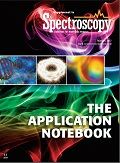Digestion and Analysis of Mixed Vitamin Samples in a Single Batch
Application Notebook
Increasing public and regulatory concerns over the safety of vitamin supplements mean manufacturers are under greater pressure than ever to ensure good manufacturing and testing processes. It is estimated that more than half of the adult population regularly take vitamin supplements, with annual sales of $14.3 billion a year. However, the sector is fraught with media reports of false or fraudulent medicinal claims, and there is already significant scrutiny and questioning from consumers. Public concerns about the safety of dietary supplements were heightened after quality issues (predominantly heavy metal contamination) were revealed in a quarter of 2000 dietary supplements from more than 300 manufacturers.
The FDA has issued requirements and expectations for good manufacturing practice to ensure the quality and safety of dietary supplements. In addition, when the new U.S. Pharmocopeia (USP) chapters 232/233 are implemented in January of 2018, stricter requirements will be put in place to limit the presence of heavy metals in drug products.
Experimental Conditions
A MARS 6 with iWave technology was used to digest 6 different vitamin samples in a single batch. iWave is a revolutionary technology advance that utilizes Light Emitting Technology™ to measure the temperature of the actual sample solution inside the vessel and does not require an internal probe. The MARS 6 One Touch "Pharmaceutical" method was used to precisely control the digestion conditions.
Samples
Pantothenic Acid
Ascorbic Acid
Magnesium Oxide
Manganese Carbonate
Chromium AA Chelate
Selenium Chelate
Sample Size: 0.25 g each
Acids Used: 9 mL HNO3; 1 mL HCl per sample
Method: One Touch - Pharmaceutical
Results
Use of the MARS 6 with iWave allowed efficient processing of six different vitamin samples for elemental analysis. As illustrated in Figure 1, the system automatically adjusts the power to compensate for the different samples so that by the end of the ramp all samples are digesting similarly. The overall time to process these samples including cooldown was 45 min. The resulting digested samples were clear and most solutions were colorless upon dilution with deionized water. However, certain transition elements will provide for a colored aqueous solution. In our case the transition elements chromium and manganese are used in the supplements providing a the slight color to those digestates.

Conclusions
The MARS 6 with iWave technology was able to successfully digest six different vitamin samples in a single batch. This technology will allow for more samples to be run in a single batch which will provide greater flexibility and productivity in the metals laboratory.

CEM Corporation
P.O. Box 200, Matthews, NC 28106s
tel. (704) 821-7015, (800) 726-3331
Website: www.cem.com

Atomic Perspectives: Highlights from Recent Columns
March 3rd 2025“Atomic Perspectives,” provides tutorials and updates on new analytical atomic spectroscopy techniques in a broad range of applications, including environmental analysis, food and beverage analysis, and space exploration, to name a few. Here, we present a compilation of some of the most popular columns.
Pittcon 2025: Highlighting Talks on Atomic Spectroscopy
February 26th 2025At Pittcon this year, there will be numerous sessions dedicated to spotlighting the latest research that uses atomic spectroscopy or elemental analysis techniques. We highlight some of these talks below that might pique the interest of spectroscopists and researchers attending the conference this year.